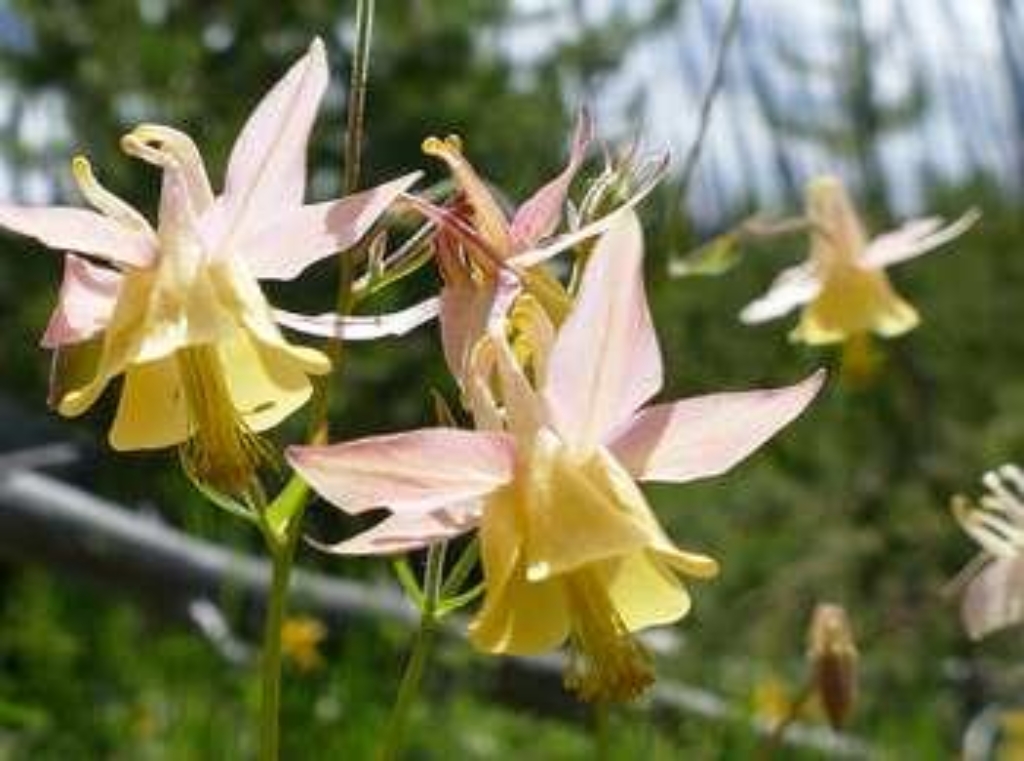
Look for abundant wildflowers in high-elevation wetlands near the road in this area.
The volcanic rocks that underlie the Absaroka Mountains are rich in calcium, magnesium, and iron. These minerals weather into soils that can store more water and provide better nutrients than another volcanic rock in Yellowstone (rhyolite).
The soil supports more vegetation, which adds organic matter and enriches the soil. You can see the result when you drive over Dunraven Pass or through other areas of the park with Absaroka rocks. They have more diverse plants, including mixed forests interspersed with meadows.
Remember that many of Yellowstone’s wildflowers are also very important parts of animal diets. The seeds of most wildflowers are used by birds and insects. Even the petals of many flowers are eaten by animals. Bees and other insects collect nectar and pollen.
Bighorn Sheep
Bighorn sheep are often seen along the slopes of Mount Washburn near Dunraven Pass.
All bighorn sheep have horns. The rings on horns can be used to determine age, though it is easier to count the rings on a ram.
Ram skulls have two layers of bone above the brain that work as a shock absorber. This is an adaptation for the collision of head-on fighting that is used to establish dominance between rams of equal horn size, especially during mating.
Animals are Dangerous
- Do not approach or feed any animal.
- Bison and elk have injured people.
- Stay 100 yards (91 m) from bears and wolves.
- Stay 25 yards (23 m) from all other animals.
You are responsible for your safety.
Think Safety, Act Safely. Yellowstone is a Dangerous Place.
Accessibility
Use caution in the large pullouts; assistance may be required.
Is there something we missed for this itinerary?
Itineraries across USA


















































